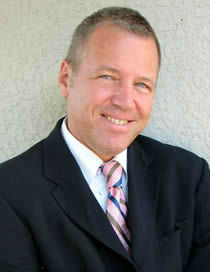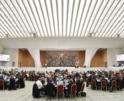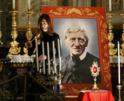
Spirituality
If our society is confused about what "celebrating the flesh" is, perhaps a reason is that Christians do not celebrate it sufficiently themselves, in the right way.

Pakaluk
Easter is a celebration of the centrality of the body in the Christian faith, because it is a celebration of the resurrection of the Lord, and, as Christians, we confess the resurrection of the body, as in the creed: "I believe in ... the resurrection of the body."
Christians do not believe that eternal life is spiritual, except temporarily. When we shout, "Christ has risen!" we are not saying that his soul escaped, or that an ethereal substance lives on, or that "in spirit" he is still with us. All of those "existentialist" interpretations of the resurrection -- along the lines of, "when the disciples said that Christ was risen, they were saying that the experience of his new life had changed their hearts" -- simply get Christianity gravely wrong. If secretly this is what you have thought, check yourself, because this is not what the church holds. Our wager is much bolder.
The Catechism of the Catholic Church puts it strongly: "'The flesh is the hinge of salvation' (Tertullian, De res. 8, 2: PL 2, 852). We believe in God who is creator of the flesh; we believe in the Word made flesh in order to redeem the flesh; we believe in the resurrection of the flesh, the fulfillment of both the creation and the redemption of the flesh."
John Updike in his poem, "Seven Stanzas at Easter," said, "Let us not mock God with metaphor." He puts it pointedly:
"Make no mistake: if he rose at all
It was as His body;
If the cell's dissolution did not reverse, the molecule reknit,
The amino acids rekindle,
The Church will fall."
Sensing that Eastertide is indeed a time to celebrate the restoration of "the flesh," Christians traditionally have carried on in a very fleshly way, dressing up in "Easter best," showing off their natural beauty and glorifying God in "Easter parades," spending lots of time outdoors in the fine weather, and enjoying good food and company.
If our society is confused about what "celebrating the flesh" is, perhaps a reason is that Christians do not celebrate it sufficiently themselves, in the right way.
You have probably puzzled over what Jesus said to Mary Magdalene after he rose from the dead. She wanted to hold tightly to his body. But he said, "Do not touch me, for I am not yet ascended to my Father," (Jn 20:17). But how could she touch him after he ascends? That's the puzzle. Wasn't she right in trying to hug him while he was still there, bodily, with her?
Whatever else it means, surely Our Lord's rebuke to Mary is an instruction to us that now, after his ascension, we should try to cling to him bodily, as she was trying then. And yet how would we do so?
But don't the resurrection appearances serve as a kind of instruction book for us? According to St. Paul, in a passage read recently at Mass, Jesus appeared many times:
"He appeared to Cephas, then to the Twelve. After that, he appeared to more than five hundred brothers at once, most of whom are still living, though some have fallen asleep. After that he appeared to James, then to all the apostles. Last of all, as to one born abnormally, he appeared to me." (1 Cor 15: 5-8)
And yet only a few of these are selected out and given special attention in the Gospels. Why?
For example, St. Luke tells of how Jesus appeared to men walking to Emmaus. "They were conversing about all the things that had occurred," (24:14). They finally recognized him "in the breaking of the bread" (vv. 30-31). And then their attitude was, "stay with us, Lord" -- just like Mary Magdalen! What do they teach us?
They teach that "where two or three are gathered together in the Lord's name, there he is in their midst" (Mt. 18:19-20) -- that is, that our own bodily presence in Christian fellowship (not virtual fellowship, not Zoom meetings!) is an image of the Lord. They teach us that to reflect on the Lord's passion (in Scripture) is to encounter the Lord, somehow, bodily.
And then the resonances between Emmaus and the Eucharist are obvious and surely intended by Our Lord (and St. Luke). St. Pope John Paul wrote a deep reflection on the theme, "Mane nobiscum, Domine." To long to receive him in the Eucharist is the attitude par excellence of wanting to cling to him, in the manner of Mary Magdalene, but after the Ascension.
The women go to the tomb with spices for anointing the body (Mk 16:1). They were engaged in one of the seven "corporal works of mercy," burying the dead. They found Jesus there resurrected, bodily.
Peter and the other disciples went fishing. They were engaged in their daily work, since, after all, they were fishermen. "So the disciple whom Jesus loved said to Peter, 'It is the Lord.' When Simon Peter heard that it was the Lord, he tucked in his garment, for he was lightly clad, and jumped into the sea," (Jn 21:7). Lightly clad? So the scholars tell us, as he likely kept his loin cloth on. But the Greek is literally, "naked." In his flesh, that is, he finds the Lord in the flesh.
Catholics sometimes search for the deep meanings of the Ascension. Here's one at least: it marks the time when we start clinging to the Lord bodily.
- Michael Pakaluk, an Aristotle scholar and Ordinarius of the Pontifical Academy of St. Thomas Aquinas, is a professor in the Busch School of Business at the Catholic University of America. He lives in Hyattsville, MD, with his wife Catherine, also a professor at the Busch School, and their eight children. His latest book is "Mary's Voice in the Gospel of John." You may follow him on X (twitter) @michael_pakaluk.
Recent articles in the Spirituality section
-
Some thoughts upon returning from the second session of the synodBishop Robert Barron
-
The actual great transformationMichael Pakaluk
-
Reunions in graveyardsEffie Caldarola
-
Newman and the start of the academic yearMichael Pakaluk
-
Deer in the dusky eveningEffie Caldarola


















